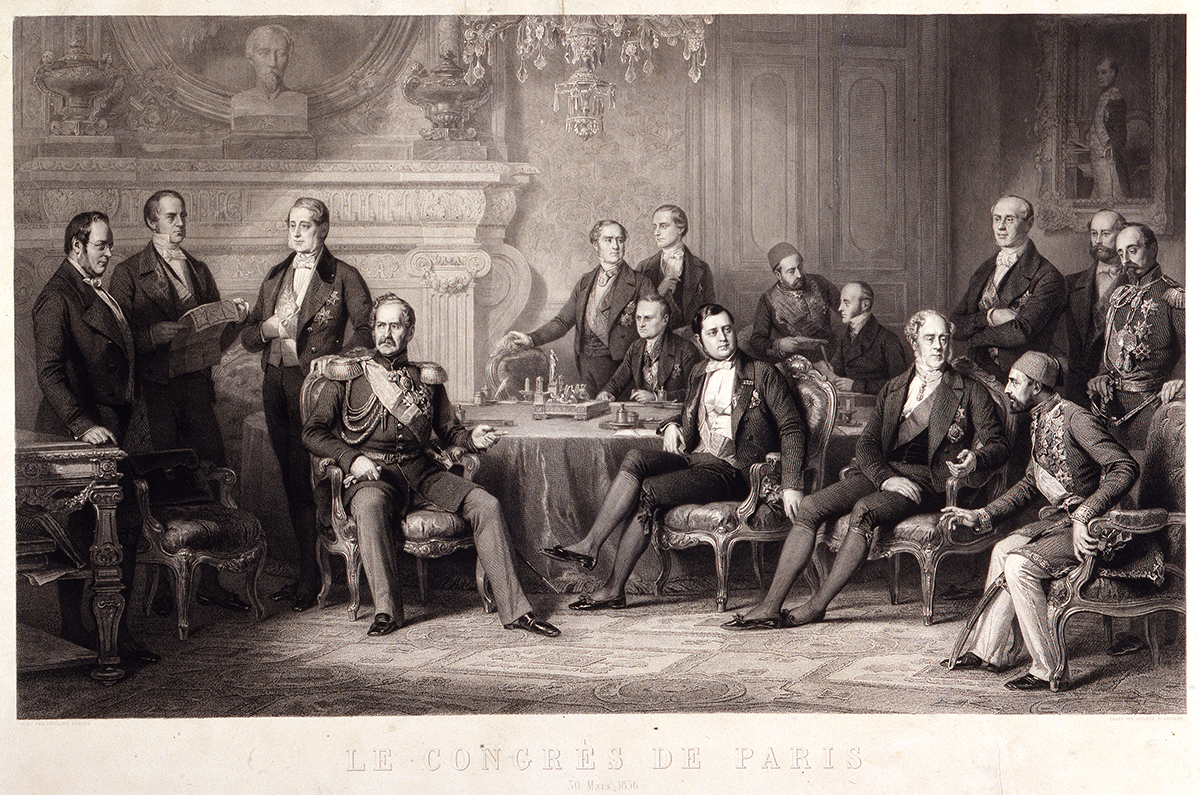Congress of Paris, March 30, 1856

The Congress of Paris summarized the results of the Crimean War which was unsuccessful for Russia. Representatives of Russia and its adversaries – Great Britain, France, Turkey and Sardinia as well as the representatives of the neutral Austria and Prussia took part in it. In the center of the picture there is the chairman of the congress Count Alexandre Walevsky, son of Napoleon, Minister of Foreign Affairs of France. Count A.F.Orlov (4th on the left) and F.I.Brunnov (2nd on the right, standing) represented Russia. Great Britain and Austria took an uncompromising stance against Russia. England didn’t hide the intentions to weaken Russia’s positions in the Black Sea and Caucasus regions. Supported by the Austrians, the British demanded to remove all the fortifications of Russia on the Black Sea coast. However, Count Orlov was able to protect Russia’s interest in this matter.
On 30 March 1856 The Treaty of Paris was signed. According to the treaty, Russia surrendered southern Bessarabia, lost the influence in the Danubian principalities and the role of the protector of the Chistians in the Ottoman Empire. But the hardest part of the Treaty was the article on “neutralization” of the Black Sea which stripped Russia of its Black Sea fleet and costal arsenals. This provision was abolished only in 1871.
Edouard Dubufe (1819–1883) was a French artist, portraitist whose success was largely due to the portraits of Emperor Napoleon III and Empress Eugénie (1853). The works of E.Dubufe were popular with aristocrats, and in 1856 Napoleon III invited the artist to the congress to make sketches of the historical event.
Auguste Blanchard (1819–1898) was a French engraver, author of some illustrations and historic engravings.
